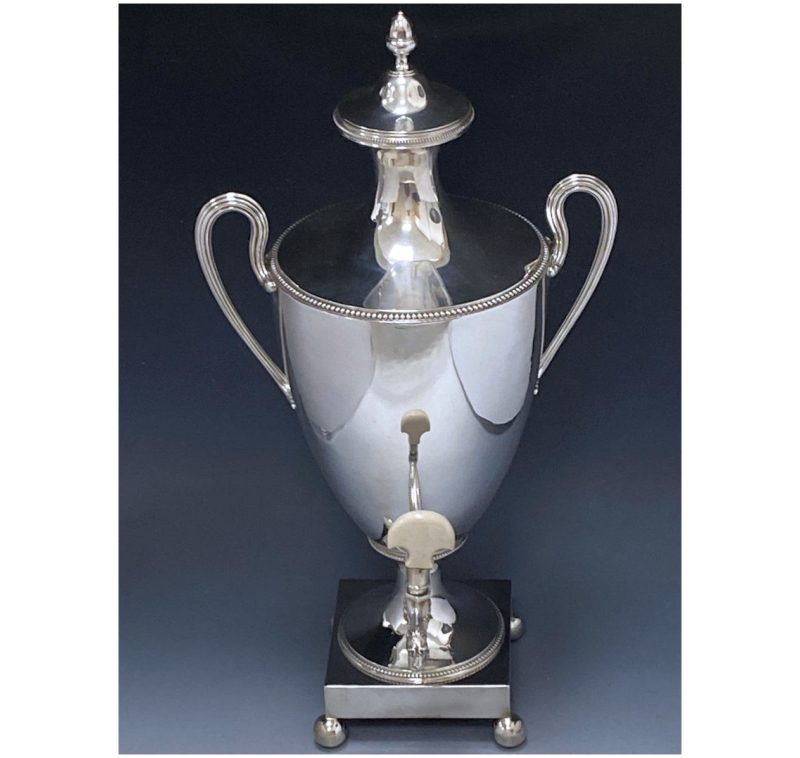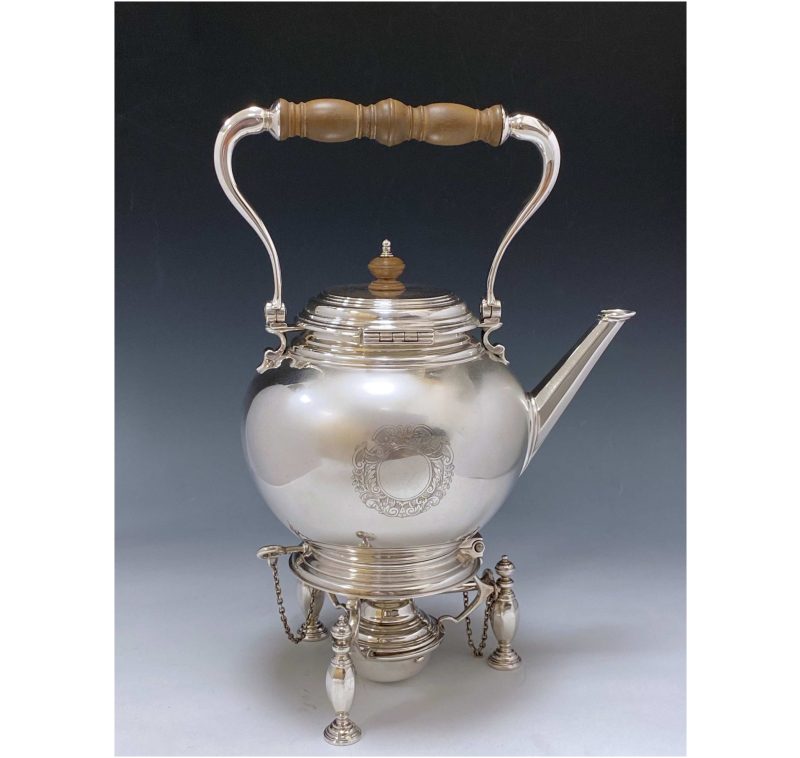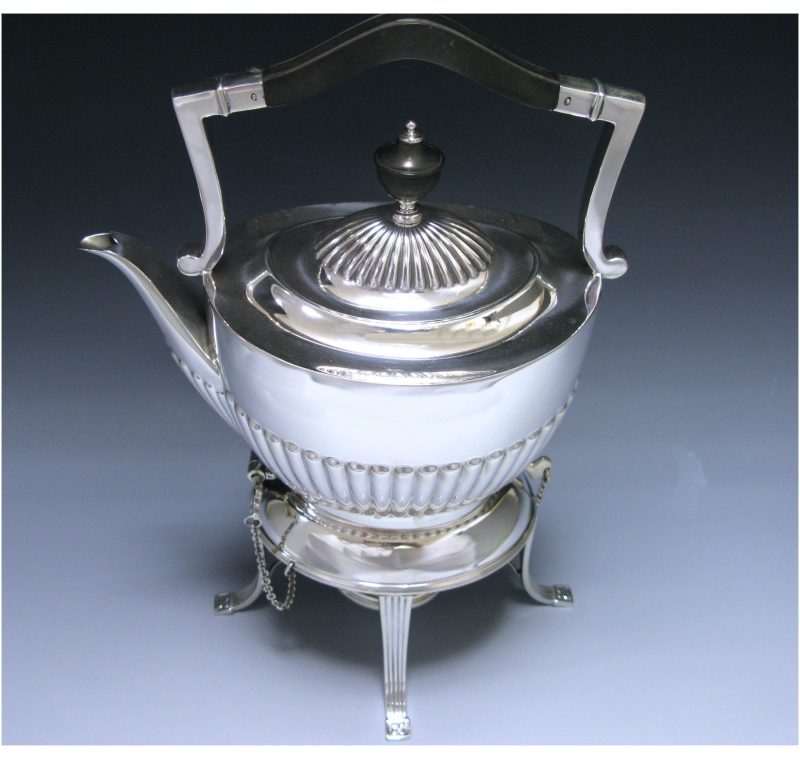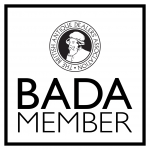Although an inventory of 1679 at Ham House, near Richmond, Surrey, mentions ‘one Indian furnace for tee garnished with silver’ it’s form sadly is unknown. The tea kettle seems to have made its appearance in the late seventeenth century. The earliest survivor appears to be one of 1695 by Pierre Harache of a rather unique style with a hexagonal body chased with Indians in various pursuits. An odd choice of subject matter perhaps as tea was only available from China until the early nineteenth century.
The oldest tea kettles are usually plain of pear shape or octagonal form placed on a stand with four feet within which a spirit burner was placed. At this date the feet often have wooden studs affixed to keep the heat from the table. By about 1730 kettles are often of a more globular form but now tend to be fixed to their stands with a front and back pin so the hot water can be poured without removing the whole kettle from its stand.
The kettles are still generally very plain until around 1735 when some of the finest rococo examples can be found. By around 1770(although known earlier) what are known as tea or hot water urns became more fashionable. These take various forms but were generally fitted with a sleeve so a hot iron or lump of charcoal could be placed to keep the contents warm (rather than a spirit burner) and had a tap usually made of bone or ivory to dispense the hot water. Both tea urn and kettles were vying with each other for popularity between around 1770 to around 1850 but after this time kettles and stands were made in greater numbers than urns.










